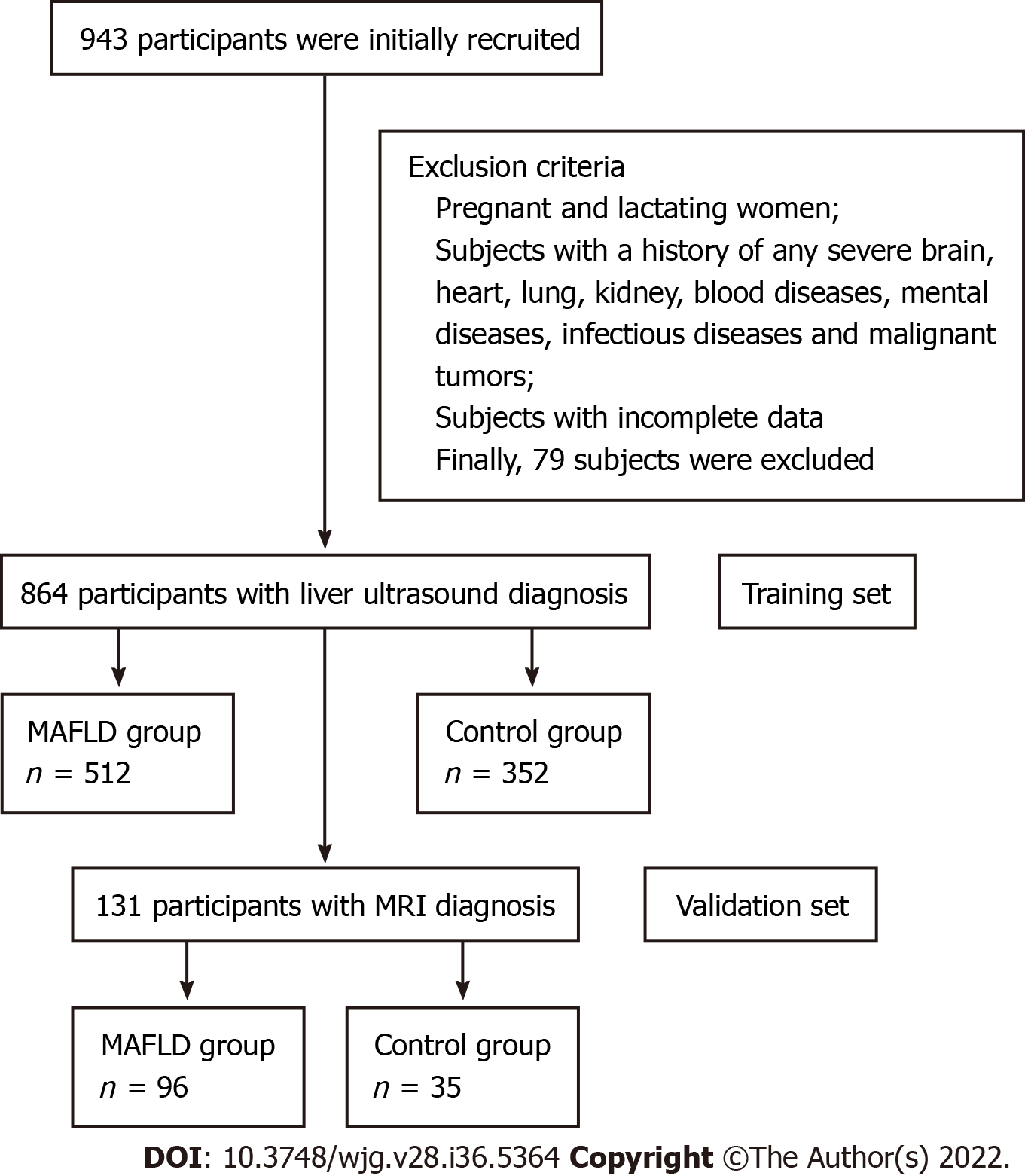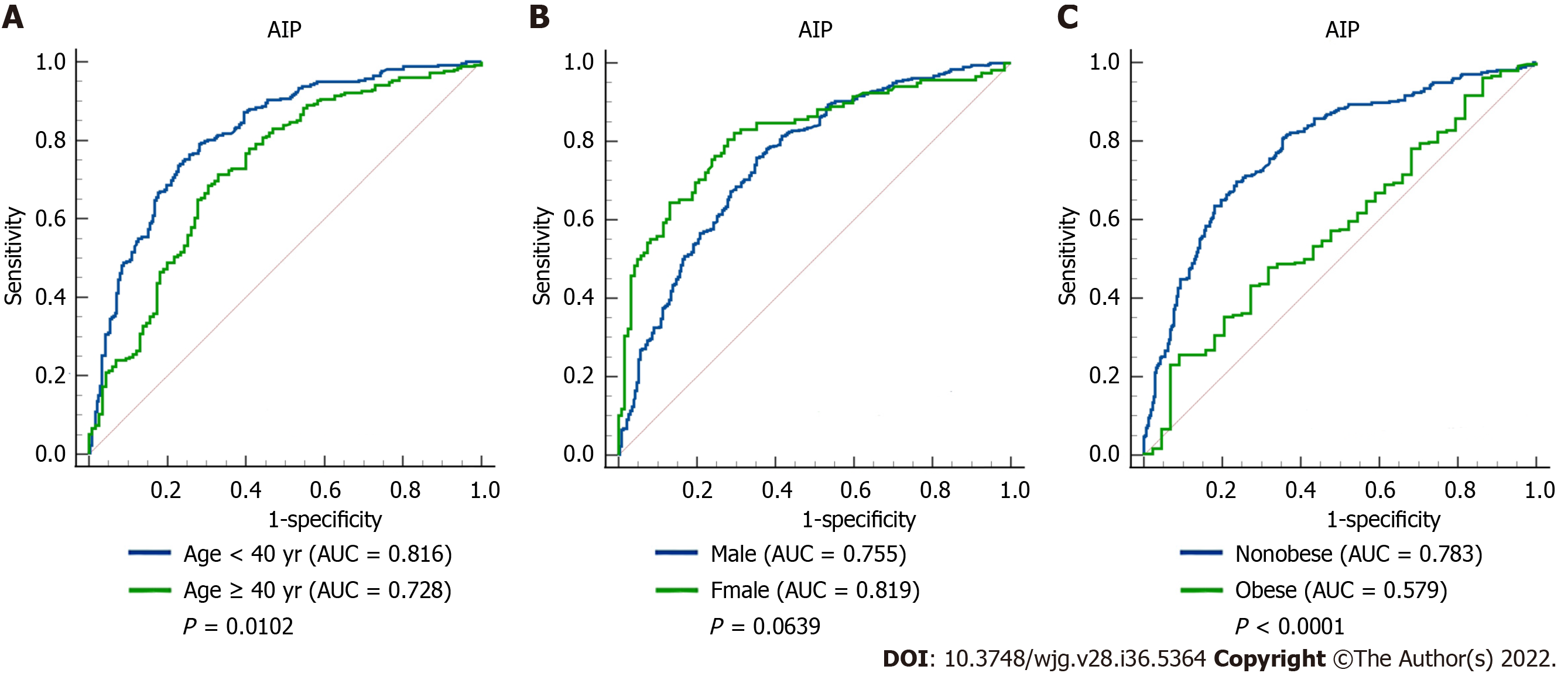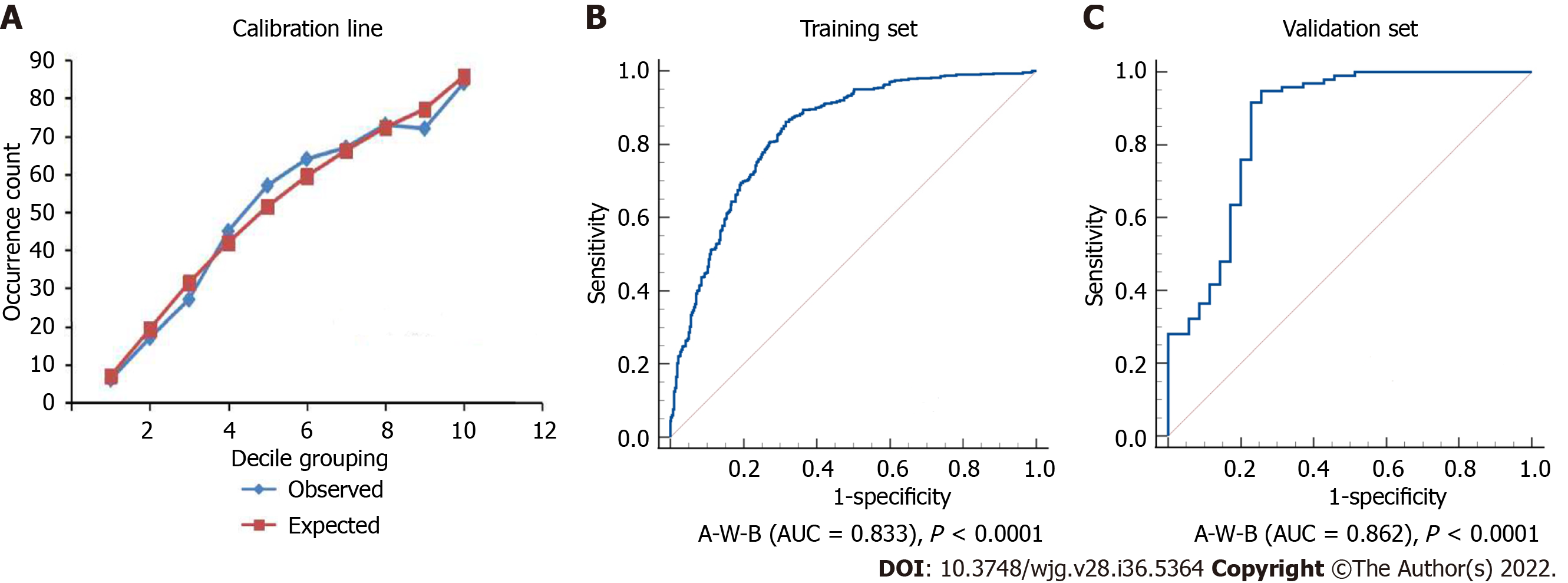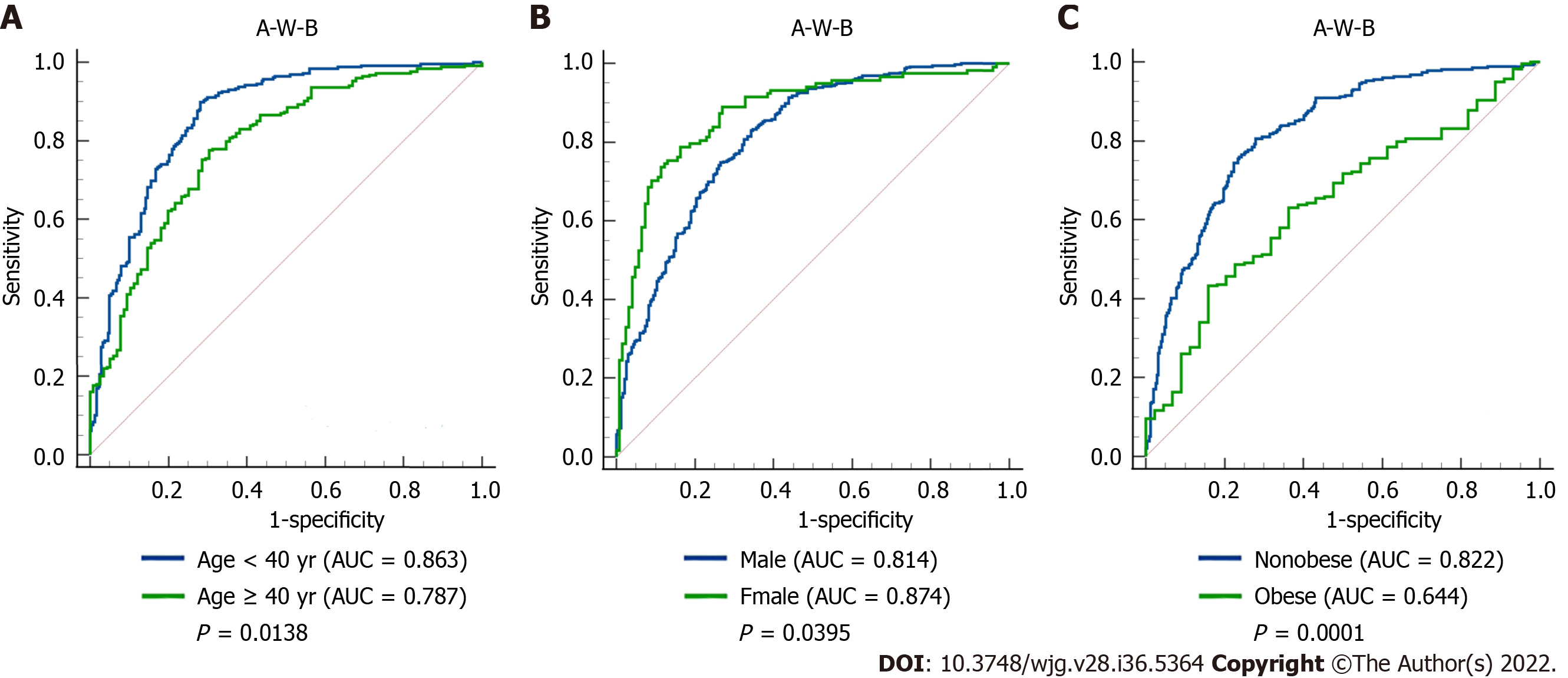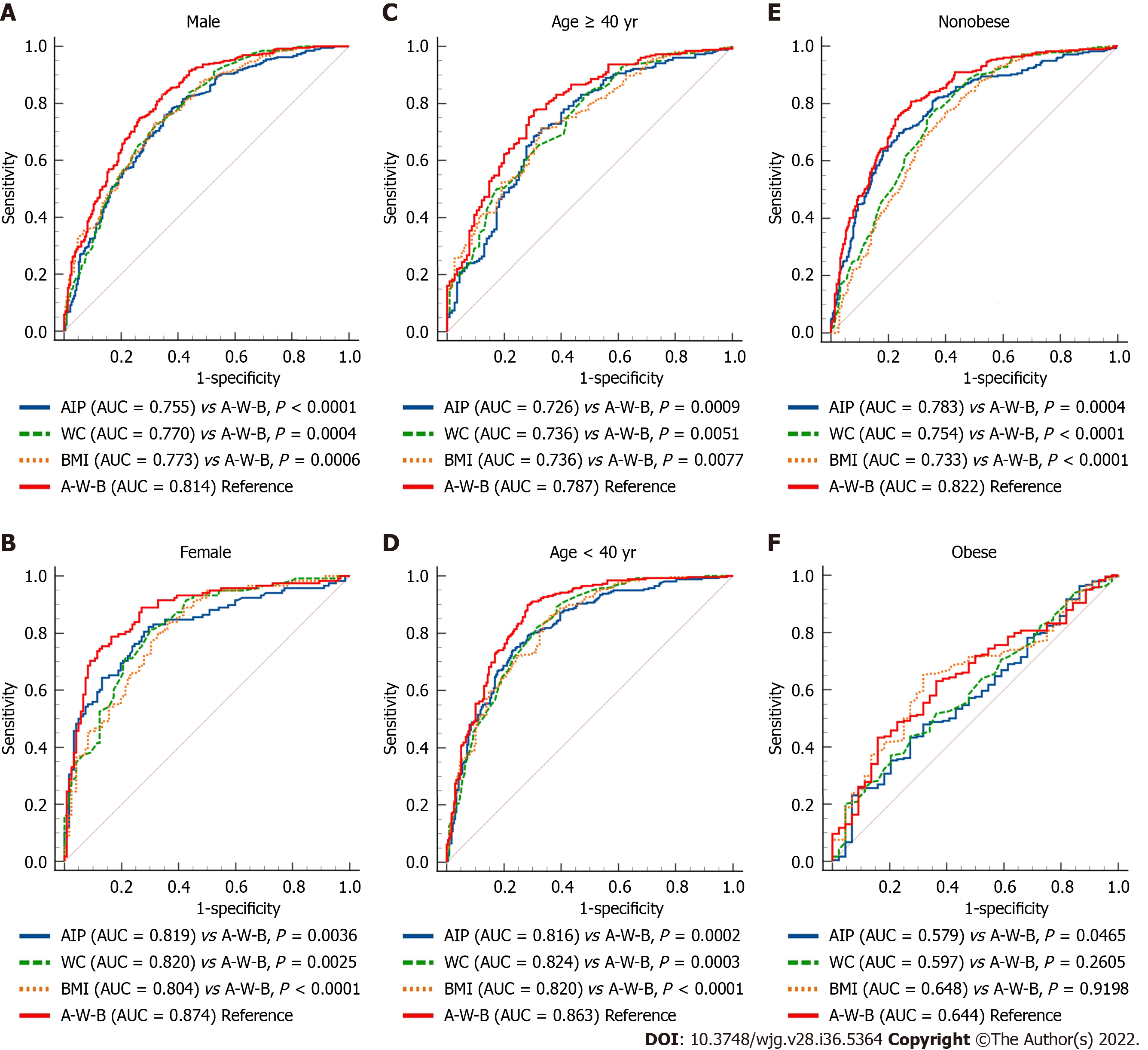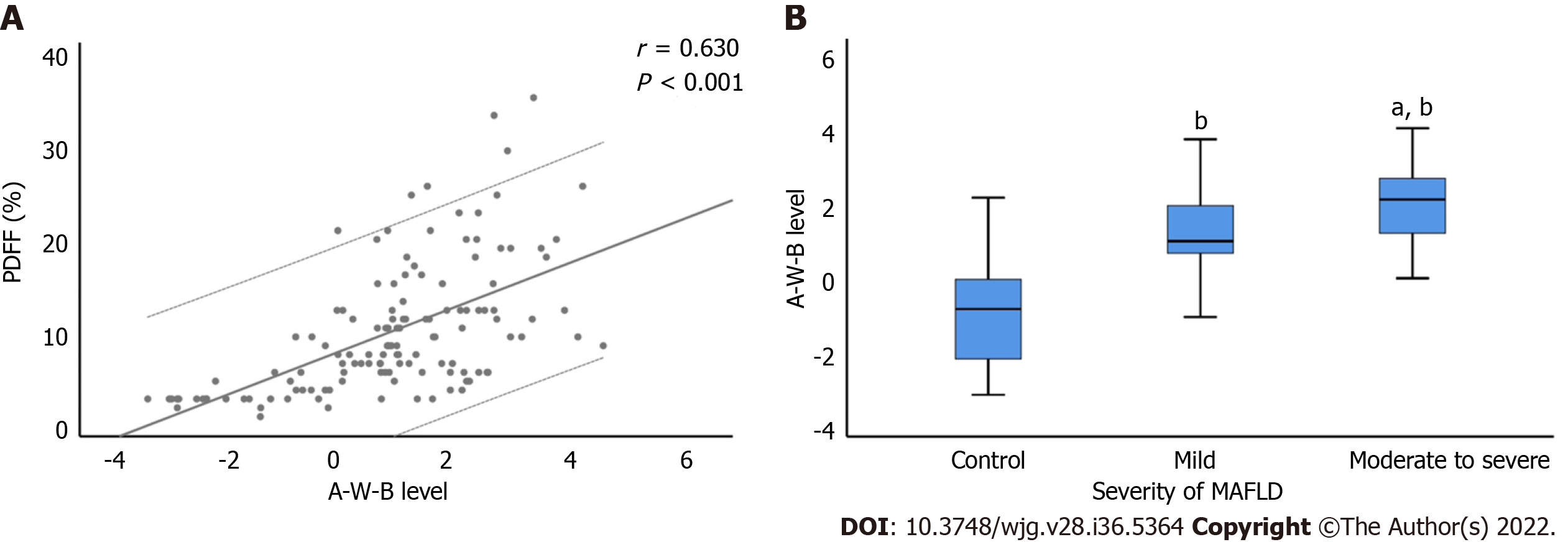Copyright
©The Author(s) 2022.
World J Gastroenterol. Sep 28, 2022; 28(36): 5364-5379
Published online Sep 28, 2022. doi: 10.3748/wjg.v28.i36.5364
Published online Sep 28, 2022. doi: 10.3748/wjg.v28.i36.5364
Figure 1 Flow chart of the study subjects.
MAFLD: Metabolic-associated fatty liver disease; MRI: Magnetic resonance imaging.
Figure 2 Receiver operating characteristic curves of atherogenic index of plasma in predicting metabolic-associated fatty liver disease in different subgroups.
A: Comparison between the young (age < 40 years) and middle-age and elderly (age ≥ 40 years) subjects (P = 0.0102); B: Comparison between male and female subjects (P = 0.0639); C: Comparison between nonobese and obese subjects (P < 0.0001). AIP: Atherogenic index of plasma; AUC: Area under the receiver operating characteristic curve.
Figure 3 Calibration line and receiver operating characteristic curves of the A-W-B model.
A: Calibration line of the prediction model combining atherogenic index of plasma, waist circumference, and body mass index (A-W-B) model (Hosmer-Lemeshow test: χ2 = 8.5901, P = 0.3780); B: Receiver operating characteristic curve of the A-W-B model in the training set (area under the receiver operating characteristic curve [AUC] = 0.833); C: Receiver operating characteristic curve of the A-W-B model in the validation set (AUC = 0.862).
Figure 4 Receiver operating characteristic curves of the A-W-B model to predict metabolic-associated fatty liver disease in different subgroups.
A: Comparison between young (age < 40 years) and middle-age and elderly (age ≥ 40 years) subjects (P = 0.0138); B: Comparison between male and female subjects (P = 0.0395); C: Comparison between nonobese and obese subjects (P = 0.0001); AUC: Area under the receiver operating characteristic curve; A-W-B: Prediction model combining atherogenic index of plasma, waist circumference, and body mass index.
Figure 5 Receiver operating characteristic curves of atherogenic index of plasma, waist circumference, body mass index, and A-W-B model to predict metabolic-associated fatty liver disease in different subgroups.
A-E: The area under the receiver operating characteristic curve (AUC) of the prediction model combining atherogenic index of plasma, waist circumference (WC), and body mass index (BMI) (A-W-B) model was significantly higher than that of A-W-B in male, female, young, middle-aged and elderly, and nonobese subjects (all P < 0.01); F: The AUC of the A-W-B model was only better than atherogenic index of plasma (AIP) in obese subjects (P = 0.0465).
Figure 6 Correlation between A-W-B levels with liver proton density fat fraction and the severity of metabolic-associated fatty liver disease.
A: The prediction model combining atherogenic index of plasma, waist circumference, and body mass index (A-W-B) level was strongly and positively associated with liver proton density fat fraction (PDFF) (r = 0.630, P < 0.001); B: Compared with the control group, bP < 0.001; compared with the mild group, aP < 0.01. MAFLD: Metabolic-associated fatty liver disease.
- Citation: Duan SJ, Ren ZY, Zheng T, Peng HY, Niu ZH, Xia H, Chen JL, Zhou YC, Wang RR, Yao SK. Atherogenic index of plasma combined with waist circumference and body mass index to predict metabolic-associated fatty liver disease. World J Gastroenterol 2022; 28(36): 5364-5379
- URL: https://www.wjgnet.com/1007-9327/full/v28/i36/5364.htm
- DOI: https://dx.doi.org/10.3748/wjg.v28.i36.5364









